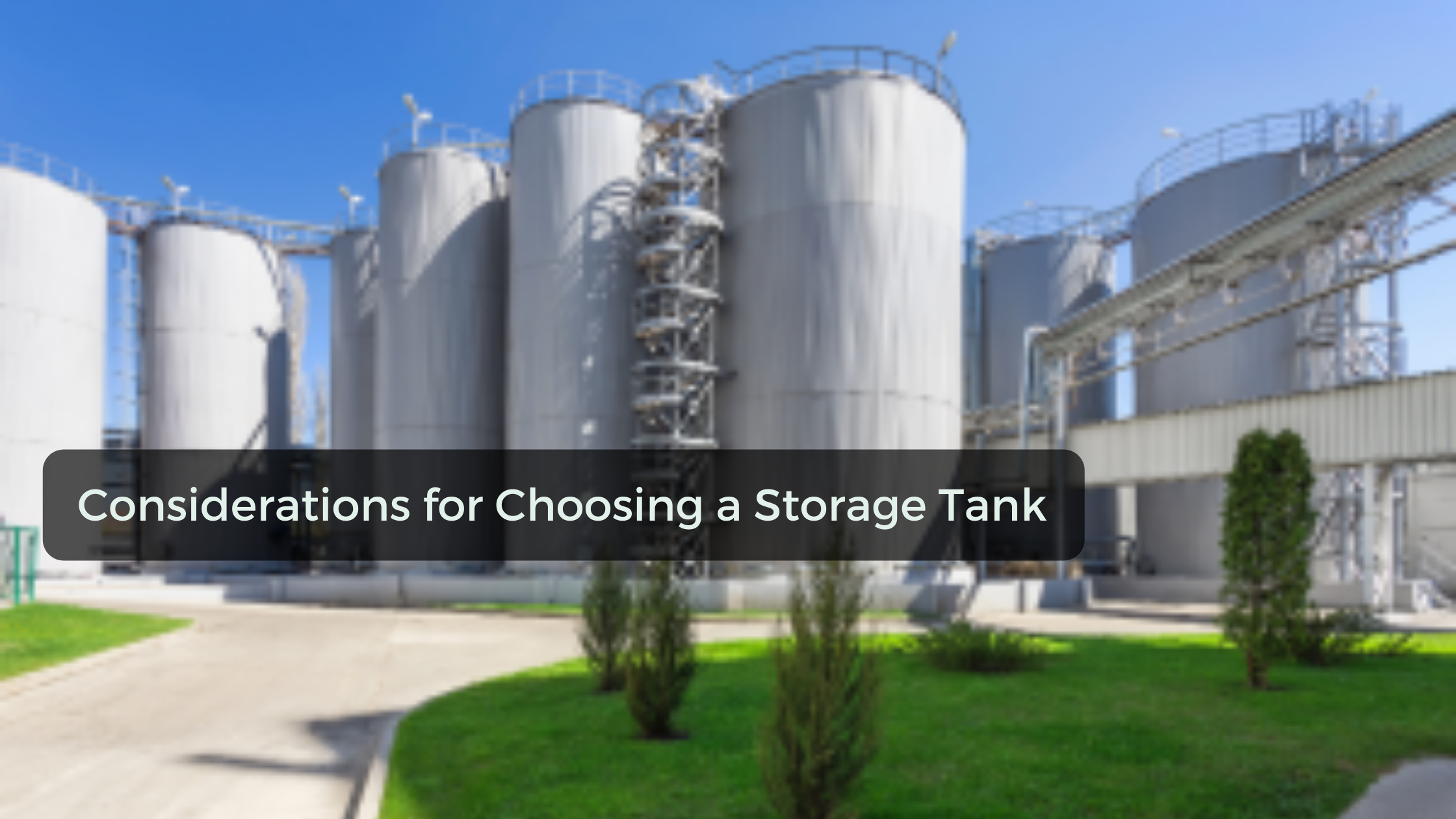
- admin
- February 3, 2022
Considerations for Choosing a Storage Tank
If you’re in the market for a new storage tank, you’ll probably have a few questions: What is the difference between welded and bolted silos and tanks? What is the significance of a tank’s coating? How long does it usually take to complete a construction project? Should the cost of maintenance be factored in?
Examining important design aspects will help you figure out what you need (and don’t need) in industrial storage tanks and acquire the greatest dry bulk storage vessel for your money.
It’s crucial to keep in mind that dry bulk materials like fly ash, cement, lime, food, chemicals, and minerals all have different storage needs. These criteria will have an impact on the tank’s dimensions, construction materials, design, and coating. To figure out what kind of tank you’ll need, start with a fundamental consideration: the tank’s construction material.
Materials of Construction
What is the size and nature of the material that will be stored? The type and volume of material to be held will typically decide the tank’s construction material. For field welded, factory welded, and bolted tanks, popular construction materials include carbon steel, stainless steel, and aluminum. For modest quantities, plastic, fiberglass, and factory-welded tanks perform well. Field welded steel and concrete tanks may be required for exceptionally large quantities. Steel bolted tanks are adaptable, holding a variety of dry bulk materials and quantities.
Size and Location
Will the tank’s design and construction be constrained by space or height restrictions? Due to the restricted area, the tank may need to be smaller in diameter and taller in height. The tank can be broader in diameter and lower in height if there is unlimited room or areas with height constraints. When appropriately constructed, both tall and narrow as well as short and broad shapes can work effectively to hold a range of materials.
Industrial Use Versus Commercial Storage
What is the frequency with which you fill and empty your silo? Corrugated tanks are a fantastic option for long-term storage that only has to be filled and emptied a few times a year. Bolted tanks, like welded or concrete tanks, can be filled and emptied on a daily basis. Another factor to consider is whether a cone-hopper bottom or a flat bottom is required.
Proper Design
Have you considered doing a flow test? Each substance, whether it’s dry foods, polymers, chemicals, wood products, or minerals, has its own set of needs. Consider the abrasiveness of your product, its bulk density, and, most crucially, its flow requirements. Do you have a free-flowing or non-free-flowing product? Before purchasing a tank, have your product flow tested if you are unfamiliar with its flow characteristics. Flow testing will establish the best construction material, hopper slope, and outlet size for a consistent flow.
Components Installed at the Factory
Would having components fitted at the factory save time if you choose a factory-welded tank? Some manufacturers of factory-welded tanks provide the option of pre-installing client components prior to shipment, saving time and money in the field. Bin activators, gates, valves, feeders, pumps, control panels, fans, sensors, insulation, and the accompanying electrical connections are all examples of factory-installed components.
Think About Expansion or Moving
Will your expanding business need the enlargement or relocation of your storage vessel in the next years? Expansion (thinking higher) is a crucial factor to consider. When the original foundation and bottom section of the first tank are designed with future extensions in mind, expansion is most practicable. Most of the time, vertical enlargement of an existing tank is less expensive than building a new tank.
The Environment
What effect may the tank’s surroundings have? In the construction of a storage tank, wind loads, seismic conditions, and roof loads (such as snow loads) are all crucial factors to consider. Tanks with a larger diameter and shorter height are better suited to places with increased seismic activity and wind loads. In corrosive, coastal, and industrial areas, updated external coating solutions should also be considered.
Coatings – Corrosion Control
What is the best type of coating? Corrosion is the storage tank’s main adversary. As a result, one of the most crucial elements to consider is the coating. However, if you take it a step further, the procedure by which the coating is applied will be the best indicator of the coating’s quality.
So, these were some of the factors to consider for choosing a storage tank. In case you’re looking for the best aboveground storage tanks for all your industrial or commercial needs, GSC Tanks is here to offer you the best services for any type of tanks you might require.
- Aboveground Storage Tanks
- Industrial Storage Tanks
Category
- Above Ground Fuel Tanks
- Above Ground Gas Storage Tank
- Above Ground Storage Tanks
- Above Ground Water Storage Tanks
- Agricultural Tanks
- Chemical storage Tanks
- Diesel Fuel Storage Tanks
- Diesel Storage Tanks
- Exernal FloatingRoof Tanks
- Farm Water Tank
- Fiberglass Oil Tanks
- Fiberglass Septic Tanks
- Fiberglass Tanks
- Fiberglass Underground Fuel Storage Tanks
- Field Erected Tanks
- Floating Roof Tank
- Food and Beverage Tanks
- Fuel tank
- Industrial Chemical Storage Tanks
- Industrial Gas Tanks
- Industrial Plastic Tanks
- Industrial Storage Tanks
- Industrial Tank heating pads
- industrial tanks
- Natural gas
- Natural gas vs Propane
- oil storage tank
- Oil Storage Tanks
- Peracitic Acid
- Petroleum Tanks
- Residential gasoline storage tanks
- Residential Water Storage Tanks
- Sodium Hydroxide Storage Requirements
- Sodium Hypochlorite Storage Tanks
- Steel Storage Tanks
- storage tank failure prevention
- Storage Tanks
- Sulfuric Acid Tanks
- Uncategorized
- UnderGround Storage Tanks
- Waste water tank
- Water Storage Tanks

 Tank Size Calculator
Tank Size Calculator






